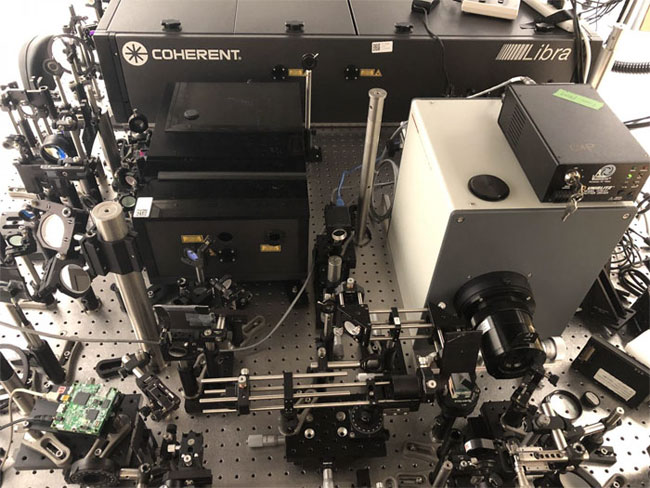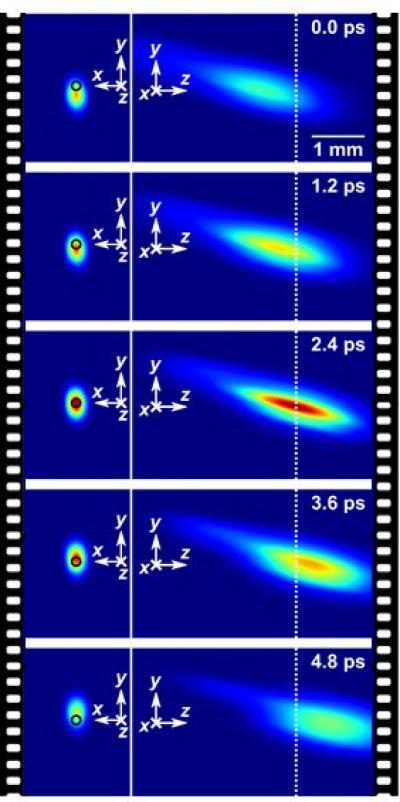
The trillion-frame-per-second compressed ultrafast photography system. Courtesy of INRS.
The T-CUP system was developed based on an fs streak camera that incorporates a data acquisition type used in applications such as tomography. T-CUP improves on CUP, which, at 100 billion frames per second, approaches but does not meet the specifications required to integrate fs lasers.
“We knew that by using only a femtosecond streak camera, the image quality would be limited,” said Caltech professor Lihong Wang. “So to improve this, we added another camera that acquires a static image. Combined with the image acquired by the femtosecond streak camera, we can use what is called a Radon transformation to obtain high-quality images while recording 10 trillion frames per second.”

Real-time imaging of temporal focusing of a femtosecond laser pulse at 2.5 Tfps. Courtesy of Jinyang Liang, Liren Zhu, and Lihong V. Wang.
The team’s setup records a sample’s dynamic intensity patterns, and then splits them into two optical pathways retaining spatial and temporal information. Aided by compressed imaging and the fast streak camera, this division helps minimize the number of measurements and enables image reconstruction algorithms to achieve frame rates two orders of magnitude better than current receive-only ultrafast cameras.
The first time it was used, the T-CUP ultrafast camera captured the temporal focusing of a single fs laser pulse in real time. This process was recorded in 25 frames taken at an interval of 400 fs, and detailed the light pulse’s shape, intensity, and angle of inclination.
“We already see possibilities for increasing the speed to up to one quadrillion frames per second,” said INRS professor Jinyang Liang.
T-CUP’s ability to clearly reveal the complex evolution in the shape, intensity, and width of a temporally focused pulse in a single measurement could open the way for single-shot characterization of ultrashort pulses; experimental investigation of nonlinear light-matter interactions; and real-time wavefront engineering for deep-tissue light focusing. Such an advance in ultrafast imaging as T-CUP could fundamentally change imaging techniques and applications by making it possible to detect and analyze light-matter interactions at an unparalleled temporal resolution.
The research was published in Light: Science & Applications (https://doi.org/10.1038/s41377-018-0044-7).
https://www.photonics.com/Articles/Ultrafast_Camera_Takes_Trillions_of_Images_per/a64007Bagikan Berita Ini














0 Response to "Ultrafast Camera Takes Trillions of Images per Second in a Single Exposure"
Post a Comment